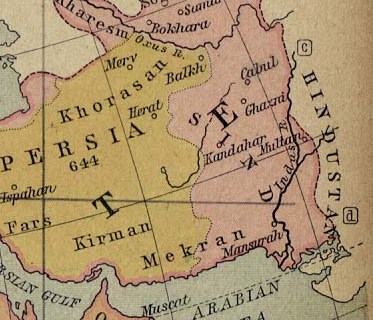Файл:Ancient Khorasan highlighted.jpg
Зовнішній вигляд
Ancient_Khorasan_highlighted.jpg (373 × 320 пікселів, розмір файлу: 58 КБ, MIME-тип: image/jpeg)
Історія файлу
Клацніть на дату/час, щоб переглянути, як тоді виглядав файл.
| Дата/час | Мініатюра | Розмір об'єкта | Користувач | Коментар | |
|---|---|---|---|---|---|
| поточний | 19:07, 22 жовтня 2010 |  | 373 × 320 (58 КБ) | Officer | {{Information |Description= |Source= |Date= |Author= |Permission= |other_versions= }} |
Використання файлу
Такі сторінки використовують цей файл:
Глобальне використання файлу
Цей файл використовують такі інші вікі:
- Використання в an.wikipedia.org
- Використання в ar.wikipedia.org
- Використання в arz.wikipedia.org
- Використання в azb.wikipedia.org
- Використання в ba.wikipedia.org
- Використання в bn.wikipedia.org
- Використання в ca.wikipedia.org
- Використання в ckb.wikipedia.org
- Використання в de.wikipedia.org
- Використання в el.wikipedia.org
- Використання в en.wikipedia.org
- Muslim conquests of Afghanistan
- History of Afghanistan
- Kabul
- Al-Mansur
- Muslim conquest of Persia
- Greater Khorasan
- Jewish mythology
- History of Arabs in Afghanistan
- Portal:Afghanistan
- Delhi–Multan road
- Talk:Afghanistan/Archive 8
- Siege of Kabul (1504)
- User:Northamerica1000/Portals of the world
- User:HistoryofIran/Greater Khorasan
- List of sieges of Kabul
- User:Falcaorib/Medieval Empires (500-650 AD)
- User:Falcaorib/Afghanistan
- User:Falcaorib/Iran
- Використання в en.wiktionary.org
- Використання в eo.wikipedia.org
- Використання в es.wikipedia.org
- Використання в fa.wikipedia.org
Переглянути сторінку глобального використання цього файлу.

